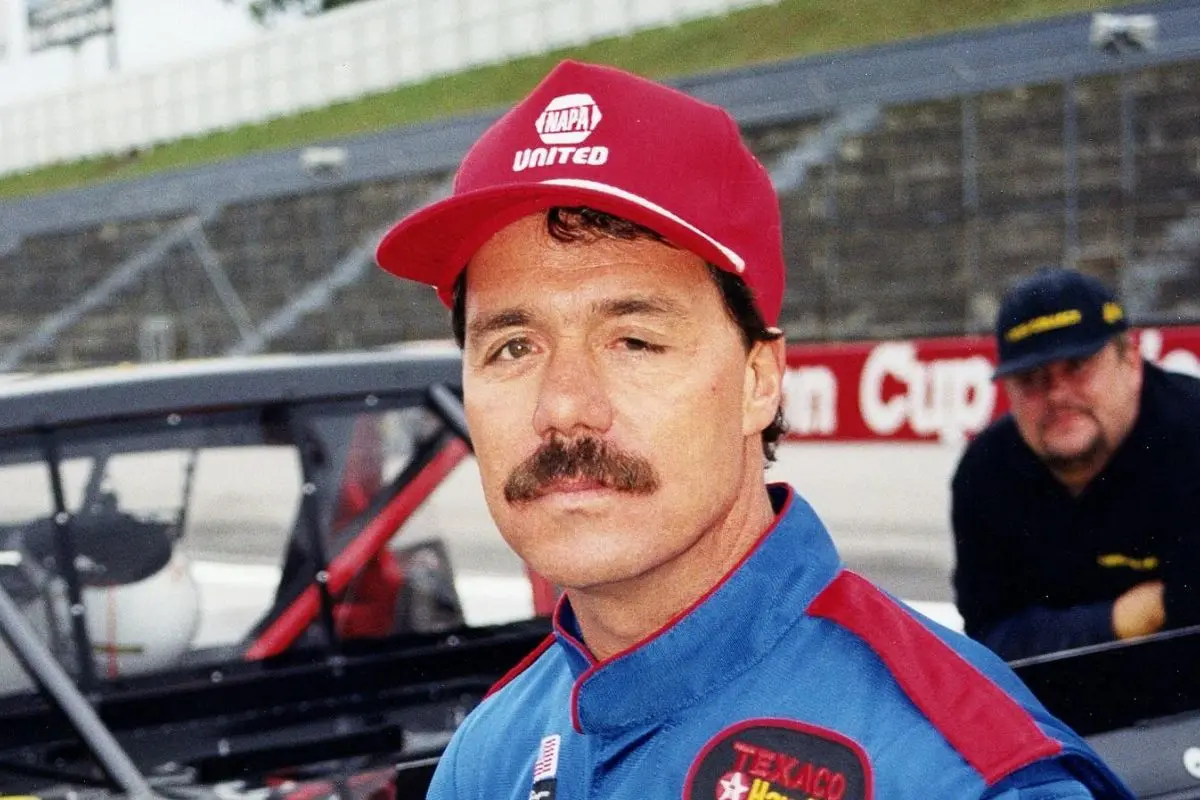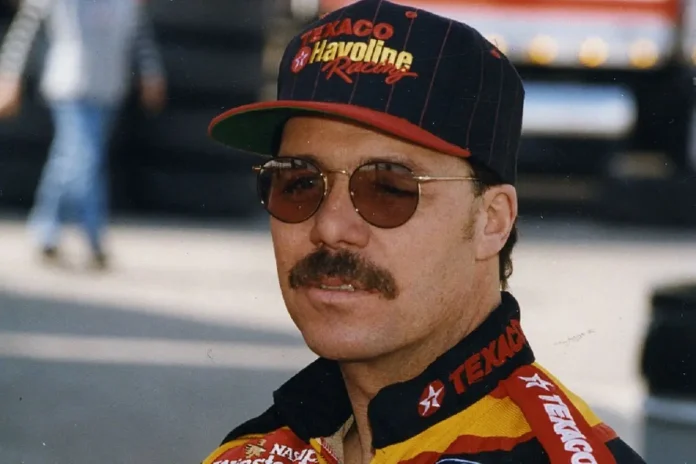A crash at Darlington in 1990 changed Ernie Irvan’s life. What started as a mistake led to anger, injuries, and a turning point in his career. Fans were upset. Drivers were hurt. But what Irvan did next surprised many. This story is not just about a race—it’s about a man who made a big error and chose to make things right. What happened after the crash turned him into more than a racer. It helped make him a legend.
Key Highlights
- Ernie Irvan caused a massive 13-car pileup at Darlington Raceway during the TranSouth 500 in April 1990.
- Irvan was running 10 laps down when his car broke loose in turn four, leading to the crash.
- Frustration from fellow drivers was directed at Irvan due to his role in the incident.
- Following the crash, Irvan sought redemption and personally apologized to each driver involved.
- His sincere apologies marked the start of his efforts to improve his reputation among peers.
Comparisons to Modern Drivers
Despite the passage of time and the evolution of racing styles, the spirit of NASCAR has always been characterized by a blend of fierce competition and fellowship. This duality is vividly demonstrated through the actions of modern drivers like Carson Hocevar and Sammy Smith, whose audacious maneuvers have stirred the NASCAR community.
Hocevar’s aggressive tactics in Atlanta disrupted the races of three fellow competitors, while Smith’s retaliatory last-lap move against Taylor Gray resulted in a multi-car pileup. These instances underscore a contemporary trend towards brash, unapologetic behavior on the track.
In contrast, Ernie Irvan, a notable figure from NASCAR’s past, offers an instructive counterpoint to these modern tendencies. With a laudable record of 15 wins and numerous top finishes, Irvan was nonetheless notorious for causing chaos.
Yet, unlike today’s drivers, Irvan distinguished himself through sincere apologies, embodying a bygone era’s respect and accountability, which resonate with veterans like Kyle Busch and Richard Petty.

Setting the Stage for the Incident
The anticipation was tangible as the 1990 season unfolded, setting the stage for what would become a memorable chapter in NASCAR history.
The Darlington Raceway, known affectionately yet fearfully as the ‘Lady in Black,’ stood as a formidable challenge with its distinctive asymmetrical shape and abrasive surface. Drivers prepared diligently, aware of the track’s history of testing the mettle of even the most seasoned competitors.
In the midst of this backdrop, Virgil Earnest “Ernie” Irvan emerged as a promising figure, making his debut with Larry McLure’s race team after replacing Phil Parsons.
Irvan had already caught the attention of the NASCAR community by delivering an impressive third-place finish at the Atlanta Motor Speedway. This performance was a promising beginning to his partnership with McLure’s team.
Yet, as they approached Darlington, the team was about to face a test of resilience that would demand not only skill but also humility and growth.
The Darlington Raceway Incident
As engines roared to life at the TranSouth 500 in April, anticipation hung in the air, yet it was Ernie Irvan‘s misstep that would dominate the headlines.
The 31-year-old Californian, previously successful in Atlanta, found himself struggling at Darlington Raceway. Running 10 laps down, Irvan’s car unexpectedly broke loose in turn four, entangling Ken Schrader. This miscalculation released chaos, resulting in a colossal 13-car pileup.
“Ernie needs to calm down.” – Ken Schrader
At Darlington in April 1990, Ernie Irvan triggered a 12-car crash when he spun out the leader while running 10 laps down
Over the next few days, Ernie went to each race shop of the cars involved and apologized to the teams in person. pic.twitter.com/3nTdBXYUWj
— nascarman (@nascarman_rr) April 2, 2025
The incident left tempers flaring, particularly from Schrader, who lamented, “Ernie needs to calm down.”
Sterling Marlin echoed this sentiment, remarking on Irvan being “a little bit over his head.” The crash had grave consequences, inflicting head injuries and severe amnesia on Neil Bonnett.
“I figured it was coming. [Irvan] was a little bit over his head, and he broke it loose coming off [turn] four, and that was it.” – Sterling Marlin
This event cemented Irvan’s reputation for reckless driving, earning him unflattering nicknames. However, beyond the turmoil, Irvan was determined to address the fallout, though the path to redemption remained arduous.

Ernie Irvan’s Apology and Redemption Efforts
Though the weight of his missteps at Darlington loomed large, Ernie Irvan embarked on a path of redemption, seeking counsel from his peers, including the respected Dale Earnhardt, to navigate the storm he had stirred.
Understanding the gravity of his actions, Irvan took proactive steps to address the situation. His expedition led him to the Talladega driver’s meeting for the 1991 DieHard 500, where he delivered a heartfelt speech broadcasted on live television, underscoring his genuine remorse.
Despite his public apology, Irvan’s aggressive driving style persisted in a less intense manner, suggesting a complex interplay between his competitive nature and his desire for redemption.
“Over the next few days, Ernie went to each race shop of the cars involved and apologized to the teams in person.” – as per reports
Nonetheless, his willingness to acknowledge his mistakes and seek guidance from veteran drivers like Earnhardt highlighted a commitment to ethical conduct on the racetrack.
This blend of humility and determination gradually began to reshape his reputation, painting Irvan as a man in pursuit of personal growth and respect.
Ernie Irvan’s Near-Fatal Accident and Comeback
While Ernie Irvan’s path toward redemption had already begun to reshape his legacy, it was his harrowing near-fatal accident at the 1994 Goodwrench Dealer 400 that truly solidified his standing as a NASCAR legend.
During a practice session at Michigan International Speedway, Irvan’s Ford Thunderbird suffered a catastrophic tire failure, slamming into the wall at over 170 MPH. The dire situation saw initial responders racing against time as Irvan teetered on the brink of death, saved by Dr. John Maino’s quick-thinking emergency tracheotomy.
“When something serious happens, an eeriness comes over the garage. It becomes very quiet. This was one of those situations. As we got more information about just how serious an accident it was, our attention turned to hoping that Ernie was going to be OK. Many of us have been through blown tires, this was one of the severe cases of what can happen.” – Dale Jarrett
Flown to a hospital, Irvan faced grim odds with a mere 10 percent chance of survival. The NASCAR community held its breath, unified in hope for his recovery.
Confronting expectations, Irvan made a triumphant return to racing on October 1, 1995, at North Wilkesboro. His indomitable spirit and remarkable comeback not only cemented his legendary status but also highlighted his profound resilience.

News in Brief: Ernie Irvan’s Redemption at Darlington
Ernie Irvan’s voyage from causing a massive crash at Darlington to personally apologizing to each affected driver reflects his commitment to sportsmanship and personal growth. His subsequent near-fatal accident and remarkable comeback highlighted his resilience and determination, earning him respect within the racing community. Irvan’s story is a demonstration of the human capacity for redemption and perseverance, illustrating how individuals can evolve through adversity and maintain integrity, ultimately leaving a positive legacy in the world of motorsports.
ALSO READ: Emotional 1993 NASCAR Race Honors Fallen Legends Alan Kulwicki and Davey Allison

